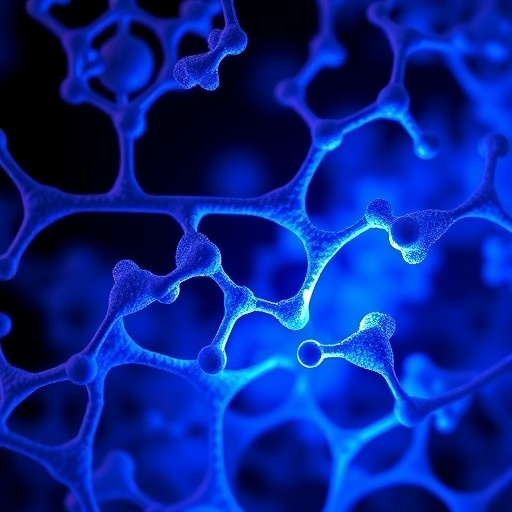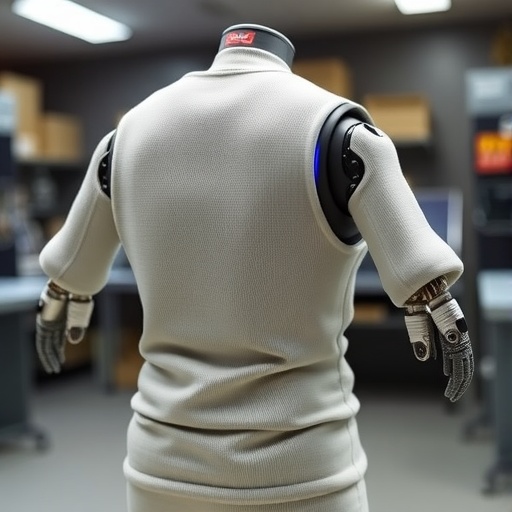In a remarkable leap forward for genetic engineering, researchers have unveiled a transformative strategy to dramatically enhance the precision and efficiency of gene knock-in techniques. This breakthrough, described in a recent study published in Cell Research, presents an innovative approach that nearly completely redirects insertion-type indels into recombination events. Such a paradigm shift in genome editing fundamentally improves the introduction of desired DNA sequences into the genome, facilitating the study of complex biological phenomena such as endogenous biomolecular condensates with unprecedented clarity.
At the heart of this advancement lies the challenge that has long bedeviled molecular biologists: achieving high efficiency and specificity in inserting genetic material at precise genomic locations. Traditional methods like CRISPR-Cas9 introduce double-strand breaks (DSBs), which are often repaired via error-prone pathways leading to insertions or deletions (indels). These indels can disrupt gene function or complicate the interpretation of experimental outcomes. While homology-directed repair (HDR) mechanisms promise precision, their relatively low efficiency in mammalian cells has limited their practical application for knock-in purposes.
Addressing this fundamental bottleneck, the authors devised an ingenious method that almost entirely reroutes insertion-type indel—typically a byproduct of non-homologous end joining (NHEJ)—toward homologous recombination pathways. This redirection leverages cellular repair machinery more favorably to incorporate predefined sequences, thereby significantly boosting knock-in efficacy. By flipping the repair mechanism preference, the new technique departs radically from past strategies that either tolerated indels or struggled with the deceptively stochastic nature of repair pathways competing inside the nucleus.
The implications for genetic engineering are profound. This technology simplifies the creation of genetically modified cell lines and animal models, which are essential tools to explore gene function, model diseases, and design gene therapies. The ability to reliably knock in sequences into endogenous loci empowers researchers to tag proteins with fluorescent markers or epitope tags without reliance on exogenous overexpression systems, preserving native expression patterns and physiological context.
Among the most exciting applications demonstrated by the researchers was the analysis of endogenous biomolecular condensates—membraneless organelles formed via phase separation processes that compartmentalize biochemical reactions in cells. Traditional overexpression systems frequently distort protein behavior and condensate dynamics, obscuring true biological functions. With this enhanced knock-in method, the team successfully tagged critical condensate-associated proteins at their natural genomic loci, permitting the observation of their authentic dynamics, interactions, and responses to cellular signals.
Diving deeper, the study meticulously characterizes the molecular underpinnings of this redirected repair pathway. By optimizing guide RNA design, donor template structure, and leveraging novel small molecules or proteins that bias repair towards homologous recombination, the researchers achieved staggering rates of precise integration. The data highlight how subtle modulation of repair factors and the DNA microenvironment orchestrates the repair outcome.
Moreover, the investigators showcased that this refined knock-in technique is broadly applicable across diverse cell types, including hard-to-transfect primary cells and induced pluripotent stem cells. Such versatility is critical since many biological questions hinge on manipulating cell types that were previously refractory to efficient genome editing.
To validate their approach, the study provides comprehensive sequencing analyses demonstrating not only elevated knock-in rates but also minimal off-target effects and indel formation. This dual advantage alleviates concerns over unintended genomic alterations, a major safety consideration especially relevant to clinical translational efforts.
The capacity to tag endogenous proteins also facilitated the dissection of biomolecular condensates implicated in neurodegenerative diseases and cancer, spotlighting how altered condensate dynamics contribute to pathogenesis. This powerful tool thus opens new horizons to precisely modulate and interrogate phase separation phenomena linked to health and disease.
The researchers additionally explored the synergistic integration of their method with state-of-the-art imaging technologies. Endogenously labeled proteins enabled live-cell super-resolution microscopy to capture condensate formation and dissolution in real time, delivering unprecedented spatial-temporal insights into cellular organization.
As reported, combining this genome editing advance with single-cell transcriptomic profiling further elucidated how editing influences cellular heterogeneity and regulatory networks, offering holistic views of cellular states post-genetic perturbations.
In essence, this nearly complete redirection of insertion-type indel toward recombination is a quantum leap in genome engineering, providing a powerful new paradigm to decode complex biological systems with precision and subtlety previously unattainable. It holds transformative promise for disciplines ranging from fundamental molecular biology to regenerative medicine and drug discovery.
While future research must continue refining these tools, including the pursuit of non-viral delivery platforms and in vivo applications, the current results mark a revolutionary milestone. The work establishes a scalable and reliable framework upon which next-generation gene therapies and personalized medicine innovations can be built.
Ultimately, this breakthrough underscores the ongoing evolution of genome editing from a blunt instrument into a sophisticated scalpel wielded with exquisite control—a testament to human ingenuity unlocking the deepest secrets written in our DNA.
Subject of Research: Genome editing techniques enhancing precise gene knock-in efficiency and endogenous biomolecular condensate analysis.
Article Title: Nearly complete redirection of insertion-type indel into recombination enhances knock-in and facilitates endogenous biomolecular condensate analysis.
Article References:
Huang, M., Fu, J., Wang, P. et al. Nearly complete redirection of insertion-type indel into recombination enhances knock-in and facilitates endogenous biomolecular condensate analysis. Cell Res (2025). https://doi.org/10.1038/s41422-025-01190-9
Image Credits: AI Generated
Tags: biomolecular condensate analysiscellular repair machinery optimizationCRISPR-Cas9 limitationsgene knock-in techniquesgenetic engineering breakthroughsgenome editing advancementshomology-directed repair mechanismsinsertion-type indels resolutionmolecular biology challengesnon-homologous end joining pathwaysprecision gene insertion methodstransformative genetic strategies





